“A Walking Canvas:” Teachers Share the Stories Behind Their Tattoos
April 1, 2022
We all have a story, a struggle, a philosophy, something we cherish. We hold these things near to our hearts.
But some have them inked into their skin.
Several teachers, in fact, have used their bodies as a mural for these symbolic illustrations.
Art teacher Samantha Alvarado-Harris said she has about 20 tattoos, with probably 50 hours of inkwork total.
She got her first tattoo when she was 18. It’s a bright orange, red and white koi fish on her left side that swims from her hip to the top of her ribs.
“I was really into Japanese traditional,” she said.
Harris was a senior in high school. She said she was in a period of encountering obstacles and changes, just as a koi fish battles “against the current when they go through their mating ritual.”
“I wasn’t doing so well, but I had this drive that I knew that there was always something bigger that I should be doing. I got the koi to symbolize the journey that I’m about to take,” she said.
Harris took two years after high school to work full-time, but the fish represented getting back to what she wanted to do with her career, which was engineering and architecture at the time.
There’s more to the Japanese legend, though.
“When a koi reaches their end destination, they turn into a dragon. My goal is when I feel fulfilled, then I’ll get a dragon on the other side to balance it out,” said Harris.
Although her first tattoo is concealed, her arms are bedecked with colorful ink.
“The arms are prime real estate, and anything that you put on there, you have to be prepared to show and talk about it, because you are like a walking canvas,” she said.
Her two most visibly prominent tattoos are in commemoration of her dog, Sailor, and her cat, Myrtle.
Sailor, who died seven years ago, is depicted with a pirate’s hat and a parrot on her shoulder. Harris was the “captain” of the house, and Sailor was her “first mate,” hence the title under her picture.
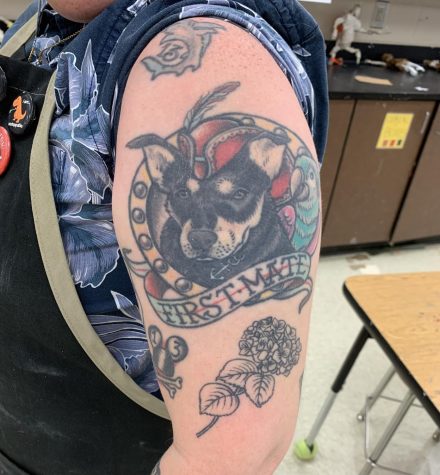
Myrtle, however, did not pass away but rather ran off one day and never returned.
“She was always kind of like a wild, wild west cat. You could never really tame her. She was just a free spirit and would just roam wherever,” Harris said. “In my mind, she’s always on the run, and this is like a ‘wanted’ poster for her.”
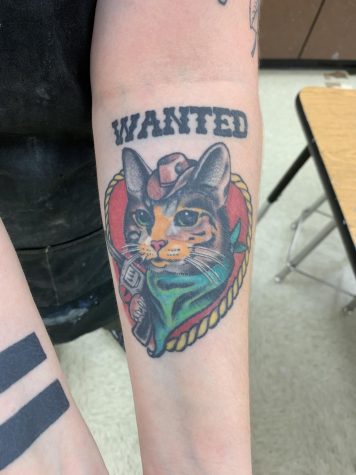
Near her right wrist, Harris has a simple, black equal sign, which stands for her belief in social justice and an equality of treatment toward everyone.
“It’s really there as a viewpoint of, ‘This is what I stand for: equality.’ So, when I go in to shake your hand, you see my viewpoint there so there’s no question,” she said.
Coincidentally, economics teacher Jeremy Fulk has the same tattoo in the same spot.
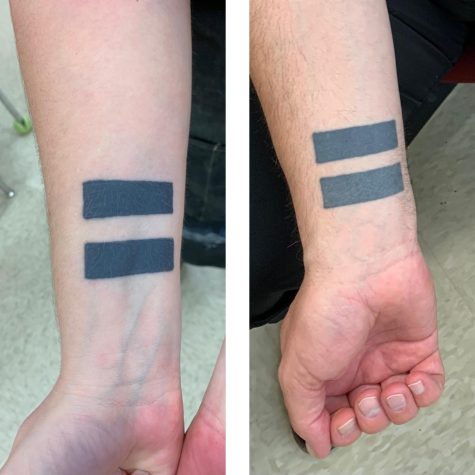
“It’s a visible symbol of support for all of our LGBTQ students. I got it during the height of the debates around gay marriage before the Obergefell decision from the Supreme Court,” he said.
This 2015 Supreme Court case legalized same-sex marriage across the United States.
Not only is it to demonstrate alliance with the LGBTQ community, but it’s also a way to communicate a larger message to students that he doesn’t care who you are, where you come from or what you believe, “I’m grading your essay on the merits,” he said.
Like Harris, he also has a koi fish, exemplifying the same metaphor of perseverance.
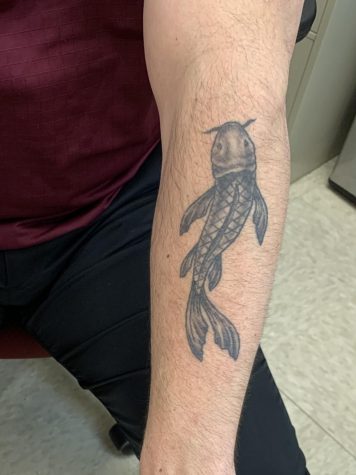
Fulk got his first tattoo when he was 21.
“I was in the Marine Corp, and you get tattoos when you’re in the Marine Corp,” he said.
It’s the Cheshire cat from “Alice in Wonderland” on his right shoulder. The tattoo is “poorly done” and is fading away, he said. He’d like to get it redone altogether someday.
The cat is like a guide to Alice throughout the movie, Fulk said. She wonders which paths and directions to follow, but the cat “tells her things that don’t make any sense,” he said, “but that’s kind of the universe, really.”
“We throw big questions at the universe and the universe gives us answers, and we’re kind of like, ‘I have no idea what you’re talking about, Universe,’” said Fulk.
English teacher Kelsey Hirsch has tattoos across her body.
She got her first tattoo two months after she turned 18. It’s a black and white sunflower on her back, etched in remembrance of a friend who tragically passed away in a car accident when she was 16.
“We called her ‘sunshine’ all the time, so I got a sunflower,” said Hirsch.
All her tattoos are predominantly reminders, she said, either of experiences she’s had or of things she likes.
For instance, she and two other friends have matching cherry blossom tattoos. One night, one of her pals was going through a difficult time, so “we all laid down and we started singing her the Mulan soundtrack to make her feel better,” she said.
All three of them were planning on getting tattoos the next day anyway but didn’t have an idea of what. But that intimate moment sparked inspiration for the ink.
Hirsch has a small microphone on her left arm to remind her of when she was in a rock band in high school. She was the lead singer. The group did well with a couple of restaurant gigs, but when college rolled around, they split up.
Another meaningful tattoo to Hirsch is on her wrist. It’s a semi-colon which represents mental wellbeing awareness, according to Project Semicolon, a grassroots mental health organization.
She acquired it when the COVID-19 quarantine was relaxing and tattoo shops were opening up again.
“It reminds me that I got through that rough period,” said Hirsch.
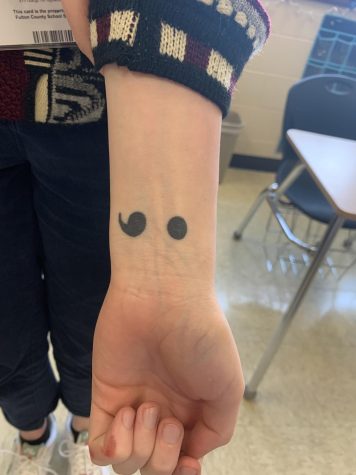
Tattoos help her feel more confident in her body, she said.
She has a raven, from Edgar Allen Poe’s “The Raven,” on her stomach, which is typically an area of self-consciousness for most people.
“Ever since I’ve gotten that tattoo, I’m just like, ‘I look better,’” she said, adding that, “Any place that I think needs improvement — I don’t like too much — that’s where I get them.”
Harris said she’s endured some tattoo stigma in her career.
In internships and interviews for teaching positions, she had to mask her arms with long sleeves to abide by the stereotype of looking professional.
“As I went through that process, I just felt so suffocated, and I told myself that whatever opportunity came through and whatever interview that I got, I would come in full,” she said. “What they see is what they got.”
When she came to Cambridge, she still kept the exposure of her tattoos more on the conservative side, but as time went on and staff and students got to know her, she embraced them.
“I started feeling, on my end, more comfortable that I could have them out and have them as a conversational piece,” said Harris.
Fulk and Hirsch agreed that this stigma is diminishing. At Cambridge especially, they feel accepted.
Hirsch said her tattoos, in a way, help her bond with her students.
“I just want to be engaging and make connections with them. That’s my whole thing. So, if it makes me more interesting, that actually helps me,” she said.
Considering getting a tattoo?
If someone’s tattoo looks good, ask him or her where it was done, said Fulk.
Hirsch’s advice is to put some thought into what you want, but “Don’t think too hard about it, because you’ll never get it done,” she said.
As for Harris, go big or go home.
“Always make your first tattoo a big one,” she said.
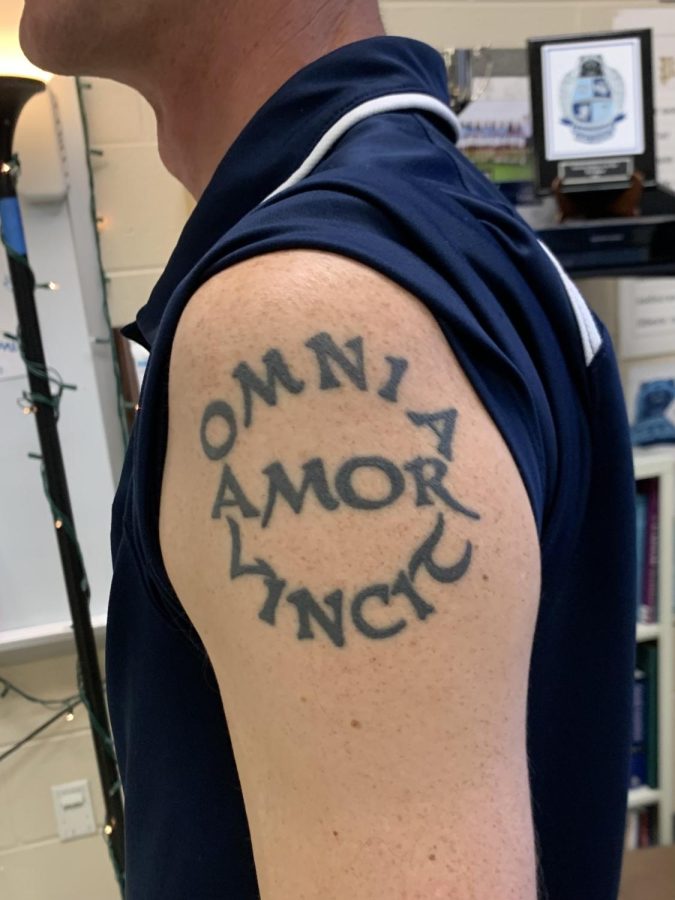
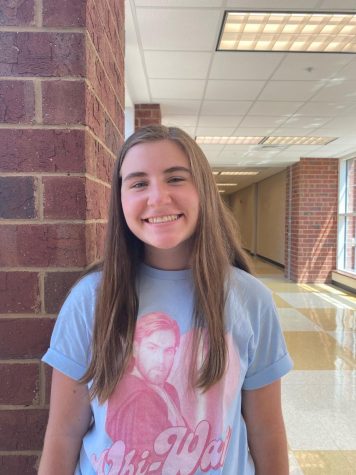
Mr. Cleary • Apr 21, 2022 at 11:03 am
This is an interesting article. I’d be interested in learning more about teachers who regret their tattoos.